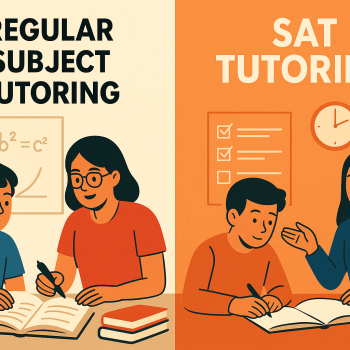Why this matters: The SAT and applying to Hebrew University of Jerusalem
If you or your child is dreaming of studying at Hebrew University of Jerusalem, you’re standing at an exciting crossroad. Hebrew University is one of Israel’s most prestigious institutions, with a vibrant international student community and rigorous academic programs. For students from the United States and other countries where the SAT is common, understanding how SAT scores fit into the application picture can be the difference between anxiety and confidence.
Before we dig into specific strategies, two honest and practical points: admissions policies can change, and the best course is always to verify requirements directly with the university’s admissions office. This article, however, will give you up-to-date, realistic guidance on how the SAT typically factors into international applications, what score ranges to aim for, how to plan preparation on the Digital SAT, and how to present your application in a competitive way.

Does Hebrew University require the SAT?
Short answer: there isn’t a one-size-fits-all reply. Many international applicants use the SAT to demonstrate academic readiness, but whether the SAT is required, recommended, or optional depends on the specific program, the applicant’s educational system, and current admissions policies. For some undergraduate tracks, especially where applicants are coming from non-Israeli high school systems, standardized test scores are a helpful, sometimes expected, benchmark.
What this means for you: treat the SAT as a valuable tool in your application toolbox. Even if a program doesn’t explicitly require it, a strong SAT score can strengthen your candidacy, especially for selective programs or scholarship consideration.
What SAT score should you aim for?
Because Hebrew University evaluates candidates holistically, there isn’t a single published cutoff score. Instead, think in terms of tiers and competitiveness:
- Competitive range: For the most selective programs (sciences, engineering, social sciences with strong international competition), aim for a score that would fall into the top quarter of applicants — commonly 1350–1550 on the 1600 scale in many international contexts.
- Solid, safe range: If your GPA and extracurricular profile are strong, a 1200–1350 score can still be meaningful, especially when paired with compelling essays and strong recommendations.
- Supplementary use: For students whose school system isn’t easily understood by admissions officers, any SAT submission that clarifies academic strength is useful — that could mean a focused effort to score well on the Evidence-Based Reading and Writing (EBRW) section if your application narrative hinges on strong critical thinking and writing skills.
Remember: score goals should be personal. Set a target based on where you want to be admitted and how your other application pieces look.
Digital SAT specifics you need to know
The SAT is now delivered digitally in many regions. The Digital SAT brings format, timing, and interface changes that influence preparation strategy:
- Shorter total test time but modular sections—preparation should focus on pacing for shorter, denser question sets.
- Adaptive section design—practice must include adaptive-style practice to build comfort with shifting difficulty.
- On-screen tools—become fluent with the digital calculator and annotation tools so you don’t lose time learning the interface on test day.
Practical tip: do at least two full-length digital practice tests under timed conditions. The familiarity with the screen, scrolling, and flagging questions is just as important as content mastery.
How to set a realistic study timeline
Here’s a sample timeline for students starting from different baselines. Customize it to fit school calendars, extracurricular peaks, and application deadlines.
| Starting Level | Recommended Preparation Time | Key Actions |
|---|---|---|
| Beginner (never taken SAT) | 6–9 months | Diagnostic test, build foundations (algebra, grammar, reading strategies), weekly practice, monthly full tests |
| Intermediate (some standardized test experience) | 3–6 months | Targeted content review, timed practice sections, two-week intensive before test |
| Advanced (near target score) | 6–12 weeks | Fine-tuning, error logs, test strategies, several full digital practice tests |
Application strategy: blending SAT with other strengths
Hebrew University, like many competitive institutions, values a holistic view. The SAT will be one of several factors. Here’s how to make the SAT work for you in the broader application:
- Contextualize your score: If your school doesn’t use a familiar grading system, include transcripts, explanations of grading terms, and — where allowed — a counselor recommendation that outlines the academic rigor of your coursework.
- Pair with strong coursework: Admissions officers expect your SAT to reinforce, not rescue, your academic narrative. Rigorous high school classes, AP or IB coursework (where applicable), and strong grades remain crucial.
- Narrative: essays and personal statements: Use personal essays to add dimension — explain your motivation, resilience, and what you’ll bring to Hebrew University’s community. A compelling narrative can complement a solid SAT score and help you stand out.
- Recommendations: Teachers who can speak to your academic curiosity and readiness for rigorous study in your intended field add weight to your application.
Practical checklist: Before you submit your application
Use this checklist as you prepare your materials so nothing is left to chance.
- Confirm whether your intended program explicitly requires or recommends SAT scores for international applicants.
- Register for the Digital SAT early and choose test dates aligned with application deadlines.
- Take a diagnostic digital SAT to identify strengths and weaknesses.
- Make a study calendar with realistic weekly goals—mix content study with timed practice.
- Collect and translate academic transcripts (if not in English or Hebrew) and get official documents ready.
- Craft your personal statement with drafts and feedback; have at least two trusted reviewers.
- Ask recommenders early and provide them with a summary of your goals and achievements.
- Plan for at least one buffer test date, in case you want to retake the SAT after review.
Example timeline for a senior applicant (one academic year)
- August–September: research Hebrew University programs, confirm test policy for your program, take a diagnostic digital SAT.
- October–December: targeted study; take a full-length practice test every 2–3 weeks; final application essay drafts.
- January–March: sit for an official SAT if ready; gather transcripts and recommendations; finalize applications.
- April–June: consider a retake if scores can improve meaningfully; send final scores to Hebrew University as required.
How to choose a target score (practical method)
Rather than choosing an arbitrary number, use this simple three-step method:
- Estimate the competitiveness of your intended program. If it’s very selective, target the competitive range described earlier.
- Look at your school performance. If your grades and coursework are exceptional, you can afford a slightly lower SAT; if they’re mixed, push harder on test prep.
- Set two target scores: a realistic target (where you’re likely to end up with consistent study) and an aspirational target (the score you’d be thrilled about). Plan study to close the gap incrementally.
How tutoring and personalized support can change the game
Many students find that one-on-one guidance shortens the path to their target score. Personalized tutoring identifies weak points faster, builds a custom study plan, and provides accountability.
For example, Sparkl’s personalized tutoring approach—1-on-1 guidance, tailored study plans, expert tutors, and AI-driven insights—can help you focus on the exact question types where time and technique will yield the biggest jump. Tutors can also simulate test-day pressure, review error logs, and refine pacing strategies for the Digital SAT format.
If you’re juggling school, extracurriculars, and application essays, a tutor isn’t just additional instruction — it’s a strategy partner who optimizes limited study time.
Sample study week for a busy student
Here’s a compact, high-impact weekly plan for students balancing schoolwork with SAT prep.
- Monday: 45 minutes — targeted math practice (weakest topic)
- Tuesday: 30 minutes — EBRW: reading passage practice + vocabulary context
- Wednesday: 45 minutes — timed section (digital interface practice)
- Thursday: 30 minutes — focused grammar/writing drills
- Friday: 20 minutes — review errors and create flashcards
- Saturday: 2 hours — full-length digital practice every other week
- Sunday: rest / light review — 30 minutes reviewing missed problems
Common application pitfalls and how to avoid them
- Waiting too long: Don’t leave test prep until the last minute. Start early enough to allow a retake if needed.
- Focusing on the wrong sections: Don’t ignore weaker sections because they’re shorter or feel less important. Many programs value balanced scores.
- Ignoring official formats: Digital test mechanics matter. Practice with the digital interface to avoid avoidable time loss.
- Under-communicating school context: If your high school’s grading system is unfamiliar, provide translations and context so admissions officers can fairly evaluate your record.
- Skipping essay polishing: A strong, authentic personal statement can amplify your SAT; make time for drafts and feedback.
What to do if your SAT score isn’t what you hoped for
First, take a breath — one test score doesn’t define your entire academic future. Here are constructive next steps:
- Analyze the score report: which question types or sections cost you the most points?
- Adjust your study plan to target those areas with specific drills and explanation review.
- Consider a retake only if you can realistically improve after focused work.
- Strengthen other parts of your application—essays, recommendations, relevant project work—to balance the overall profile.
- Communicate context in your application (if there were extenuating circumstances) in an optional statement, if appropriate.
International student tips specific to Israel and Hebrew University
Applying to universities abroad often includes extra layers: visas, language requirements, and translation of documents. A few targeted tips:
- Confirm language requirements—some programs teach in English, others in Hebrew; if Hebrew is required, present language certifications where needed.
- Prepare official transcript translations and notarizations early to avoid last-minute delays.
- Pay attention to application timelines: academic year starts and admission rounds can differ from U.S. calendars.
- Use your SAT to demonstrate academic readiness in a way familiar to admissions officers used to U.S. educational benchmarks.

Sample materials you should prepare and keep ready
| Item | Why it matters | When to prepare |
|---|---|---|
| SAT digital score report | Shows standardized assessment of academic skills | Before application deadlines |
| Official transcripts (translated) | Demonstrates coursework and grades | Months before application |
| Letters of recommendation | Context and validation from teachers | Ask recommenders early |
| Personal statement / essays | Narrative that connects your background to your goals | Draft and refine over months |
| Language proficiency evidence (if required) | Shows readiness for instruction language | Plan according to program requirements |
Final thoughts: craft a confident, authentic application
Applying to Hebrew University of Jerusalem is an exciting aspiration. Use the SAT strategically: as a way to strengthen and clarify your academic profile for admissions officers who may be unfamiliar with your school system. Combine a sensible Digital SAT study plan with a compelling application narrative, strong recommendations, and organized documentation.
If you want to maximize efficiency and outcomes, consider tailored support. Personalized tutoring — with 1-on-1 guidance, a study plan tuned to your strengths and weaknesses, expert tutors who understand the Digital SAT format, and AI-driven insights to track progress — can make your study time far more effective. Sparkl’s approach, for example, integrates these elements and can be especially helpful when you balance heavy school commitments and application tasks.
At the end of the day, a successful application reflects not only test results but your intellectual curiosity, purpose, and readiness to contribute to the academic community at Hebrew University. Start early, stay organized, and let each part of your application tell a consistent, confident story about who you are and why you belong there.
Quick resources checklist (final)
- Confirm program-specific test requirements with Hebrew University admissions.
- Take at least two full-length Digital SAT practice tests under timed conditions.
- Set a realistic study timeline and a retake plan if improvement is likely.
- Compile translated transcripts and letters of recommendation early.
- Consider personalized tutoring to accelerate improvement and reduce stress.
Good luck — and remember: targeted preparation, clear documentation, and an authentic application story go farther than a single number. If you’d like, we can build a customized study plan or sample essay outline tailored to your intended program at Hebrew University next.

















No Comments
Leave a comment Cancel